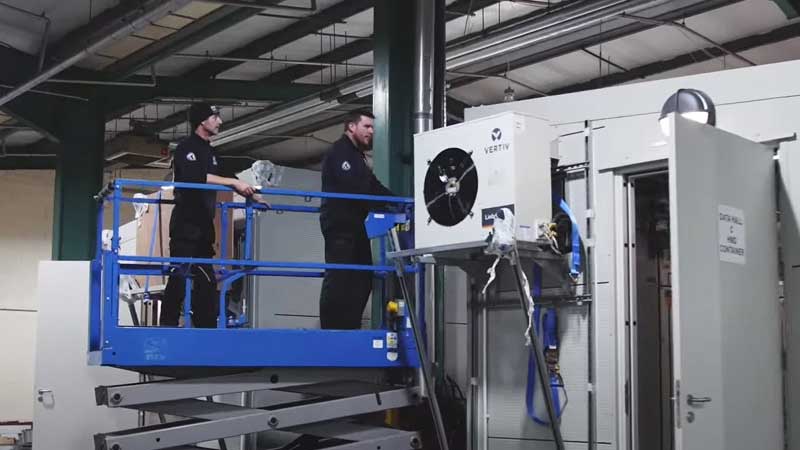Growth and speed define the landscape as organizations have become determined to make 2022 a “bounce forward” year for new data center construction. This appetite for bigger and faster data center construction not only serves to make up for the time lost during the pandemic, but also to accommodate the explosion in digital transformation initiatives that now support our post-pandemic lifestyles, from remote work to automated supply chains to telehealth. Additionally, the rise in streaming, social media, and gaming has created demand for greater cloud capacity.
Building a Standardized Data Center
Unfortunately for data center builders, this period of insatiable demand for computing power and data storage has been met by unprecedented global shortages of raw materials, as well as a lack of on-site builders and engineers to construct and deploy these new data centers. These challenges have created major headaches for organizations attempting to stay on time and on budget with their new projects. One strategy that has helped mitigate these challenges is the use of a standardized approach. Integrated systems allow for modular capacity additions, which lets data center owners deploy infrastructure quickly without sacrificing quality or safety.
This push for more integration was identified by Vertiv experts as a trend that would define the industry in 2022. There was significant evidence pointing to this move toward more integrated infrastructure systems in our What’s Your Edge survey in which nearly 40% of participants said they were using or planning to use integrated rack solutions, or micro data centers, and an additional 20% said they were using or planning to use prefabricated modular data center systems. Additionally, the global market for modular data centers is expected to reach $47.4 billion by 2026, growing at a CAGR of 17.9% over the analysis period.
Speed Deployment and Reduce Total Cost of Ownership (TCO) of Data Center Builds
As the industry continues to overcome challenges related to costs, timeline, and talent, there is increased value being placed on prefabricated designs and equipment due to the repeatability and reliability in the field. Vertiv and OMDIA conducted research which found that more than half (52%) of the data center executives it surveyed had deployed prefabricated data center solutions and 99% have plans to use modular data center designs in the years to come. Data center builders can meet demand and add capacity without worry of overprovisioning. By arriving to the site pre-wired and assembled, these solutions cut down on the time needed for the build, which increases schedule reliability and ensures more quality control. Additionally, taking a standardized approach lessens the need to have engineers and other skilled laborers on site. As data center construction expands into more developing nations, the reliability, consistency, and ease of installation with be of great importance in countries that lack design and building expertise.
In order to increase the speed of deployment while reducing TCO when using a standardized approach, I recommend the following best practices:
-
Normalize your design single-line diagrams globally.
-
Use rapid deployment configurations.
-
Ensure that alternates to conventional lead-acid batteries like lithium-ion (LIB), nickel-zinc or thin plate pure lead (TPPL) batteries have been adopted or piloted.
-
Make sure battery run times are tuned to the operations team’s capabilities.
-
Have a global request for proposal (RFP) method of procedure (MOP) and vendor-managed inventory programs in place.
Vertiv Now Offers More Powerful Integration Capabilities
With the acquisition of E+I Engineering Group, Vertiv was able to expand its power-related engineering portfolio with E+I Engineering’s medium- and low-voltage switchgear, busway, modular power solutions, and energy management systems (EMS) software.
This acquisition not only helps Vertiv develop more tailored solutions for customers, but it also supports the industry’s broader drive toward more integration by addressing many of the roadblocks and concerns associated with building data centers in the current climate. For example, shipping these solutions pre-wired and assembled reduces the need for more electrical contractors on site and creates a safer operating environment for contractors leading the installations.
Fabrication no longer needs to be outsourced by other firms, so deployment times are reduced, and the overall integration capabilities and product quality are improved. And with the additional modular capabilities, data center builders have more options to distribute power at the rack and the opportunity to make layout changes and expansions in the future.
Is your organization curious about the benefits of incorporating integrated infrastructure systems? Contact us to learn more.





